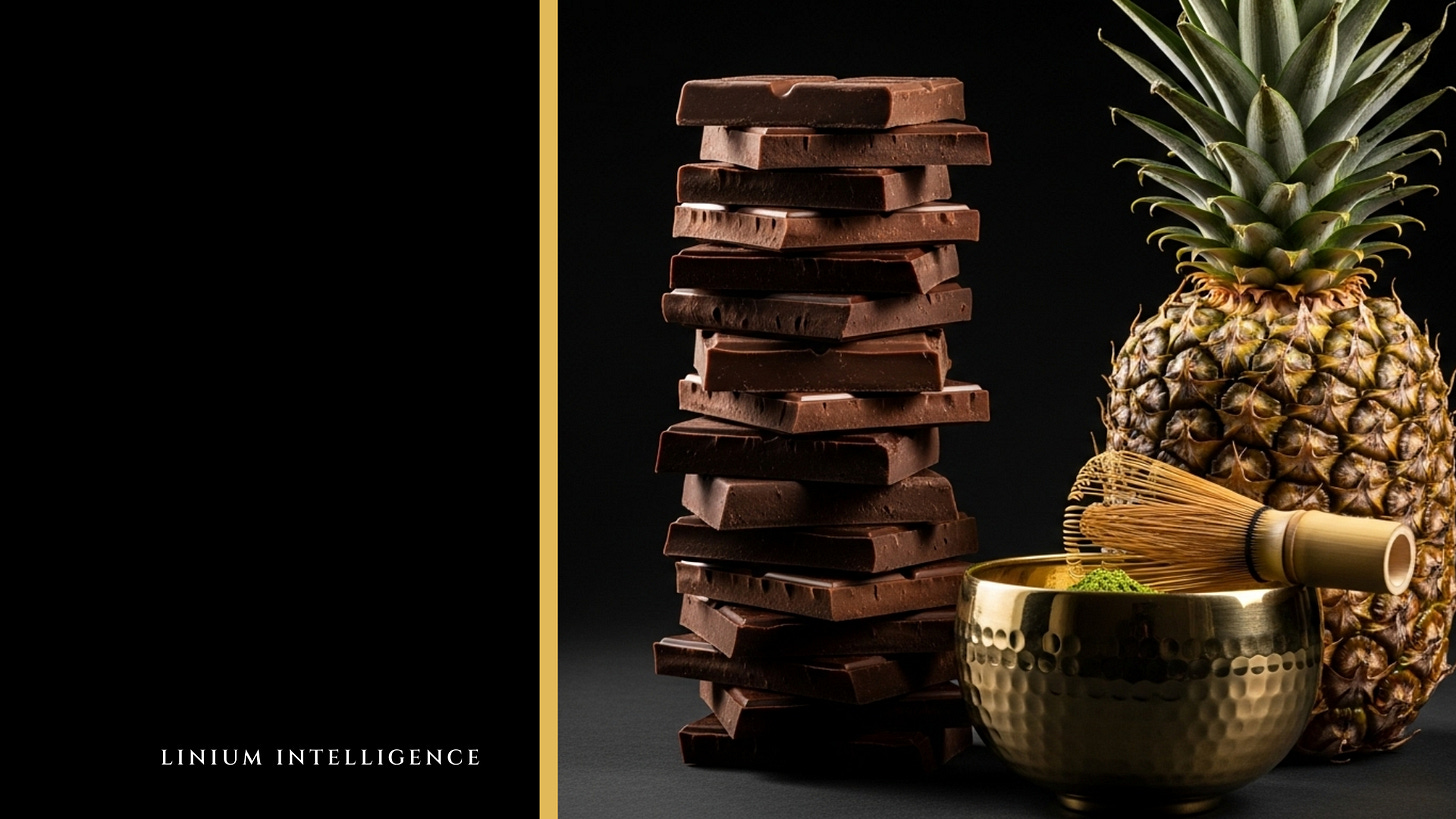What Drives Chocolate Consumption In Thailand Right Now
In late 2025, Thailand’s chocolate market is shaped by a mix of everyday indulgence, premium gifting, and niche trends. From affordable impulse treats under THB 50 to luxurious Japanese brands and innovative local bean-to-bar creations, a handful of consumption drivers dictate what Thai consumers pick off the shelves. Understanding these drivers—and the products that exemplify them—gives a clear view of the next season’s chocolate trends.
Festive & Corporate Gifting (The Top Volume Spike Every Year)
The major driver. Premium packaging = instant gift. Examples include:
Lindt Lindor New Year Gift Sets boxes
Ritter Sport advent calendars
Merci Christmas editions
Toblerone festive tins
KitKat’s festive flavors such as Pineapple Tart flavor for Chinese New Year
Siamaya’s limited edition Vanilla Jasmine Milk Chocolate for Songkran
Japanese Prestige & “Kawaii” Factor
Japanese brands enjoy an almost untouchable luxury halo in Thailand – even for pocket-sized items. Consumers willingly pay 3–10× the price of ordinary chocolate because “Made in Japan” equals refined taste, perfect quality, and adorable packaging. Examples include:
ROYCE’ – the ultimate status symbol: Nama Chocolate and Potatochip Chocolate (~200 g) at over THB 550 has not stopped customers and ROYCE’ is a top brand in Thailand’s DTC channel by share.
Meiji – the everyday Japanese luxury: Apollo strawberry-chocolate cones, Meltykiss winter-only series, Macadamia 64 g (108 THB) – all disappear instantly.
Morinaga Dars – under 50g but still feels premium at around THB 50.00 because of the sleek box and silky texture.
Matcha & limited seasonal flavours – green tea is greenMorinaga Dars Matcha, Meiji Meltykiss Matcha, ROYCE’ Matcha Nama get snatched up by matcha-obsessed teens and twenty-somethings.
Everyday Impulse Under THB 50.00 (Daily Volume King)
The true cash-cow segment that keeps chocolate moving by the millions every month. Key SKUs include:
Snickers/Mars/Twix 51g at THB 33–40
Milo Bar/Nuggets at THB 14–25
Nuts = Premium Indulgence & Health Halo
Anything with almond or macadamia sells at a significant premium.
Lotte Almond & Macadamia 86–67g priced at around THB 88
Meiji Almond & Macadamia THB 108
Van Houten 52% Cocoa Almonds 180g at THB 169
Thai Bean-to-Bar & Local Pride (Fast-Growing Niche)
Young urban Thais now pay 400–500 THB/100 g for “Made in Thailand” cacao.
Paradai single-origin 70–100% bars priced at THB 250 THB for 50g
Siamaya 75 g bars (Tom Yum, Thai Tea, Durian, Khao Soi Curry) priced at THB 195–225
Dark Chocolate = Health + Sophistication
70%+ is no longer niche.
Paradai 77–100%, Siamaya 85%, Ritter Sport 61–81%
Whittaker’s 70–92%, Marou 70–76%, Latelier 70–80%
Pergale 72%, Perugina 85%
Waitrose 72–80%
Sharing & Party Packs
Social occasions like movie nights, office desks, or birthday giveaways drive these purchases.
M&M’s / Maltesers funsize 144–175g
Celebrations 300–550g boxes
Mars Celebrations, Snickers/M&M’s value packs
Zero/Low-Sugar & Functional Trend
A very small segment of the overall chocolate confectionery market but increasingly visible.
Paradai 77% sugar-free
Whole Earth no-added-sugar 72% dark & milk lines
Lotte Zero Sugar Free 84 g bag
Target: fitness enthusiasts and diabetics with money.
Bottom Line
Thai chocolate consumption is shaped by a few dominant drivers. Affordable daily treats under THB 50 and festive or premium gifting occasions are the most influential. Japanese-inspired luxury and “cute factor” products play a strong role, followed by bean-to-bar, dark, and health-conscious options.

